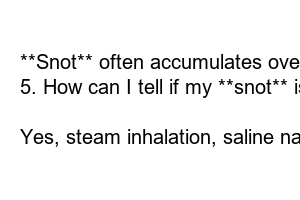코딱지가 자주 생기는 이유 Why snot often occurs ubstance that comes
코딱지가 자주 생기는 이유 **The Science Behind Why Snot Often Occurs in English** Have you ever wondered why **snot** seems to constantly be running out of your nose, especially when you have a cold or allergies? It may seem like a never-ending battle, but there is actually a scientific reason behind why **snot** often occurs … Read more









